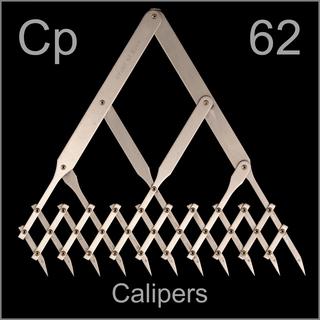 |
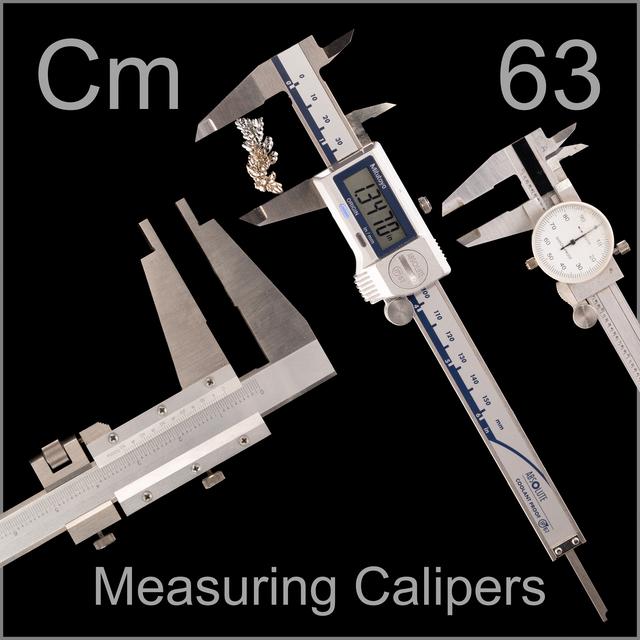
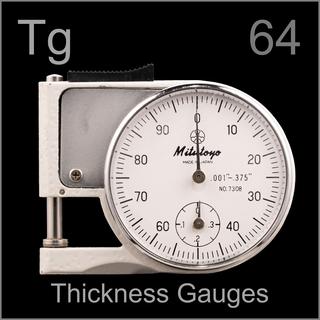 |
Leave a comment below! Or click on an individual tool to see more or leave a comment about that tool. |
|
 |
|
 |
| This caliper has a sharp carbide scribing point on one end, and a round peg on the other end. You set it to a desired dimension, then use it like a compass to scribe a short segment of a circle, marking a specific distance from an edge. |
 |
| These larger (24”, 600mm) Vernier calipers have a feature that lets you make precise adjustments to the position of the jaws, almost like in a micrometer. |
 |
| I find these large (24”) inexpensive aluminum Vernier calipers very useful for day-to-day measurements that don’t need to be extremely accurate. |
 |
| This is a fancy metal pen-style caliper meant for dentists to use to measure tooth spacings. It doesn’t have a Vernier scale, but instead has two markings on the sliding jaw, one for measurements between the outside faces of the jaws, and one for measurements on the inside. |
 |
 |
| These large “pelvimeter” calipers are meant to measure the width of the pelvis of someone about to give birth, to determine if it’s a good idea to allow that process to proceed in the normal way. Medical science is undecided on whether this is a useful thing to do, but the instruments are still being made. |
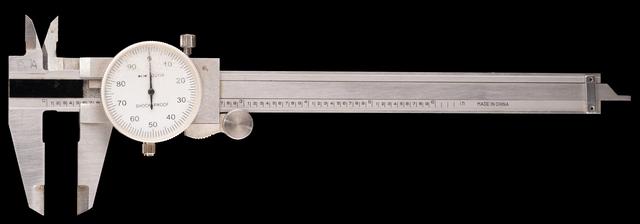 |
| Dial calipers are my favorite because they are easy to read and they always work. This one has divisions of 1/1000 inch. |
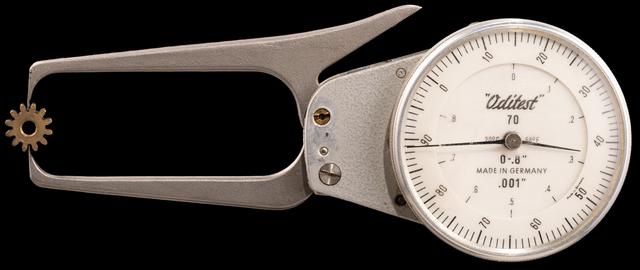 |
| Hinged-jaw calipers can be made to a high standard. These have scale divisions of 1/1000” but I suspect they’re only accurate to that level if recently calibrated, and handled very carefully. |
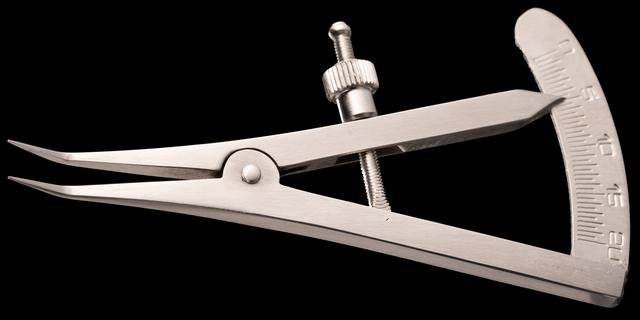 |
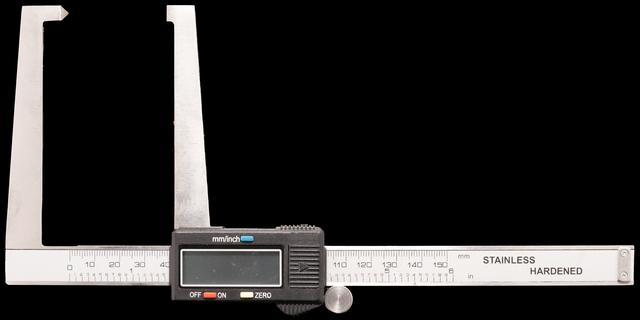 |
| Deep-jaw calipers are necessary sometimes, but accuracy really suffers because of the jaw’s unpredictable flexing. |
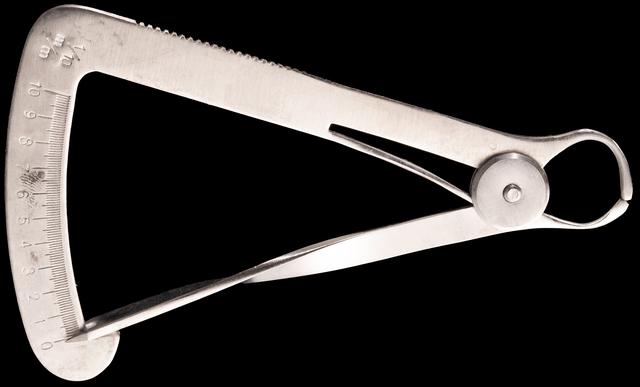 |
| These calipers work a lot like skin fold calipers, but they are much smaller and meant for measuring teeth. They are more accurate not only because they are more carefully made, but because there is magnification between the jaws and the scale. |
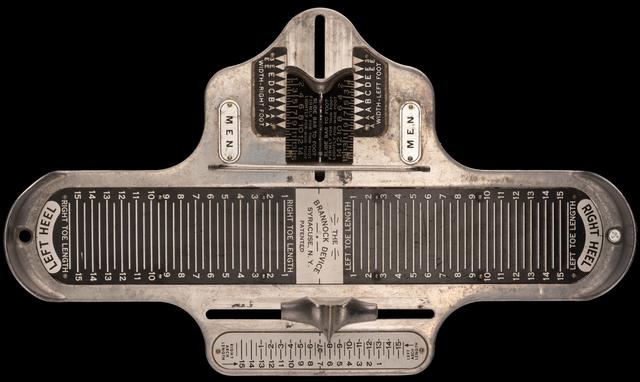 |
| The Brannock device has for generations been the standard ruler/caliper combination to measure foot length, width, and arch length, for shoe fitting. Squeeze jaw caliper |
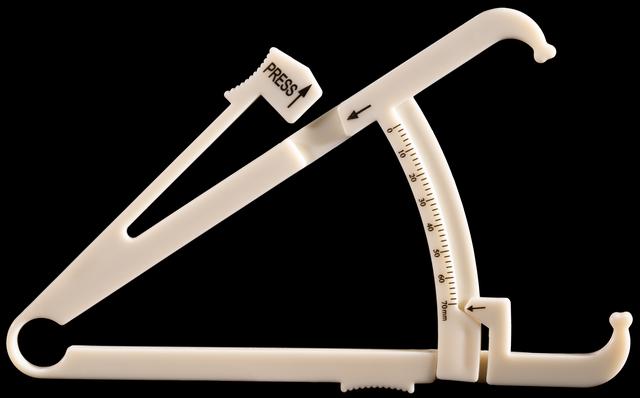 |
| With these models you press the caliper closed with the lever, and keep pushing until the two marks are in alignment, indicating that the correct, calibrated amount of pressure is being applied. |
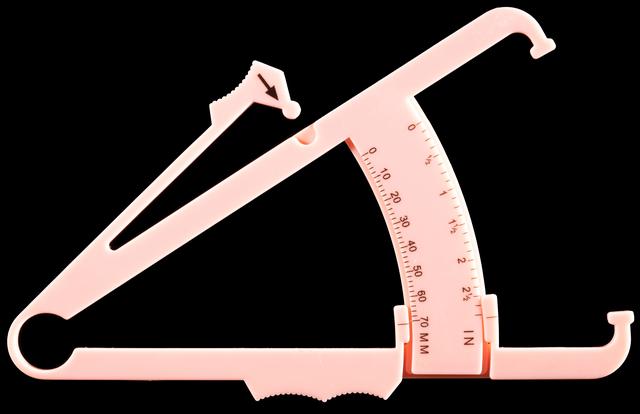 |
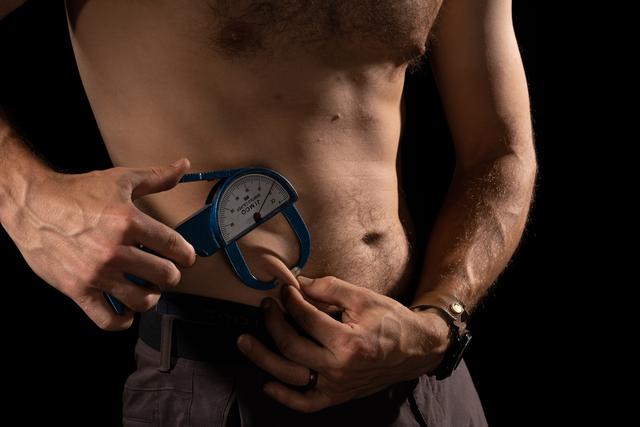 |
| To use these calipers properly, you need to entirely release the handle so the spring can exert the correct amount of pinching pressure. Even if the person being pinched yells at you. |
 |
| Lumber Thickness Calipers |
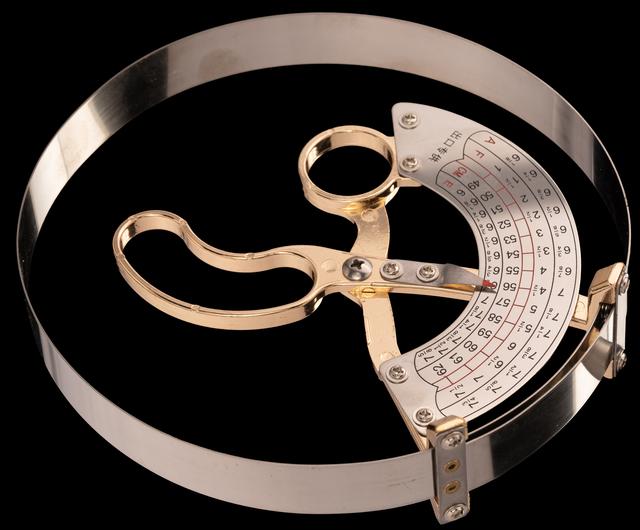 |
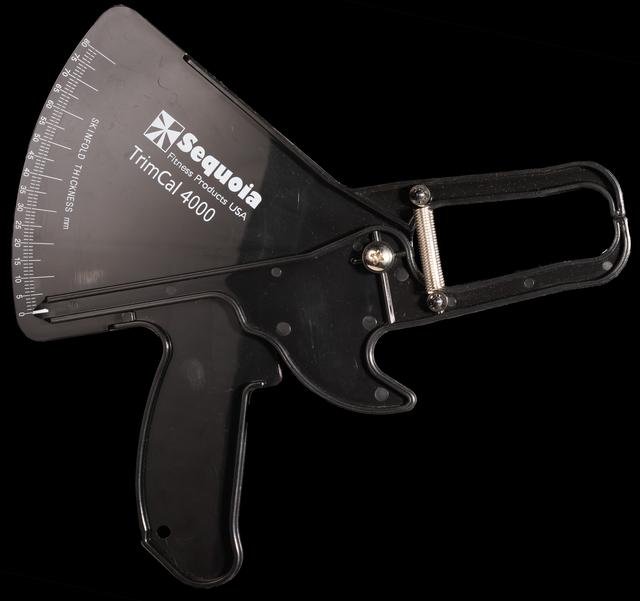 |
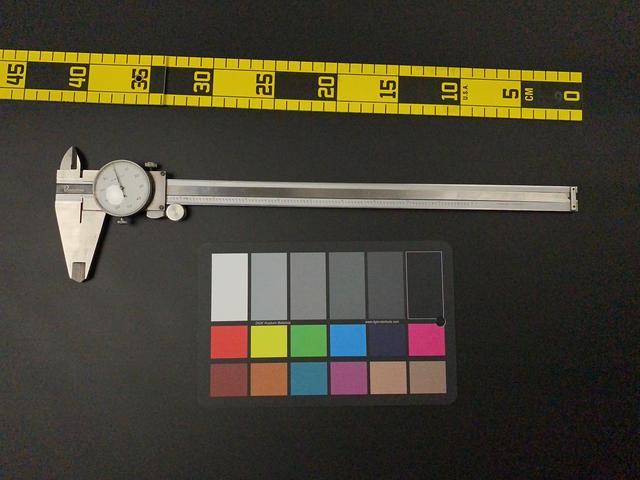 |
| Caliper |
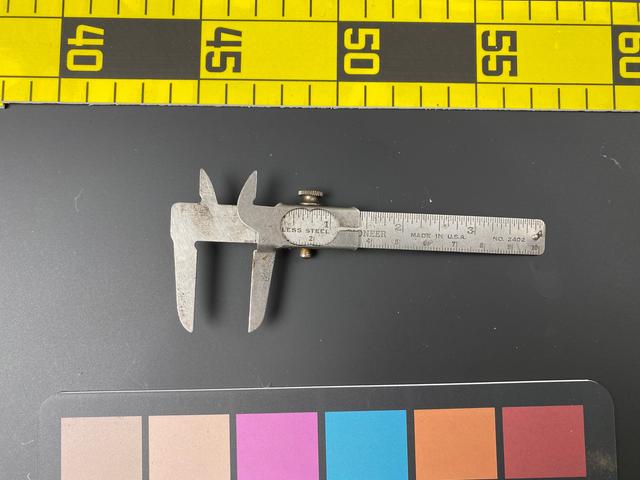 |
| Cheap calipers with no Vernier scale. |
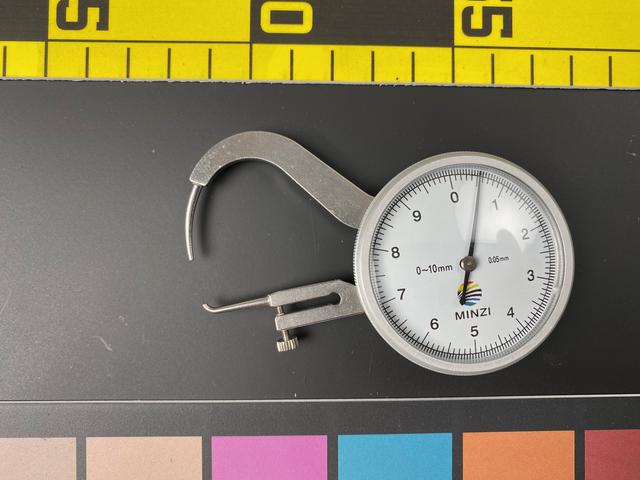 |
| For some reason these dial calipers make me think of being stung by a wasp. |
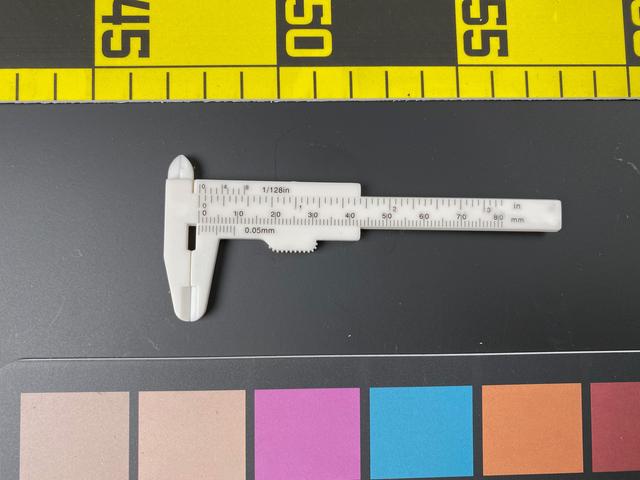 |
| There is such a thing as too cheap. These plastic novelty calipers could be fairly accurate, except the Vernier scale is not correctly matched to the main scale, and there’s no way to fix it. |
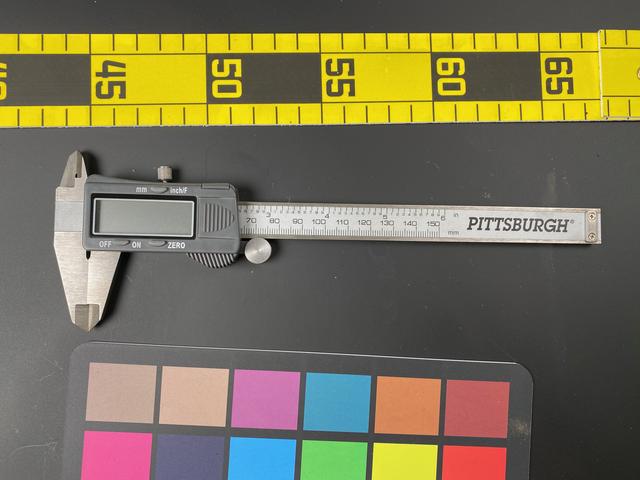 |
| Digital calipers are cheap, accurate, easy to use, and never work when you need them. |
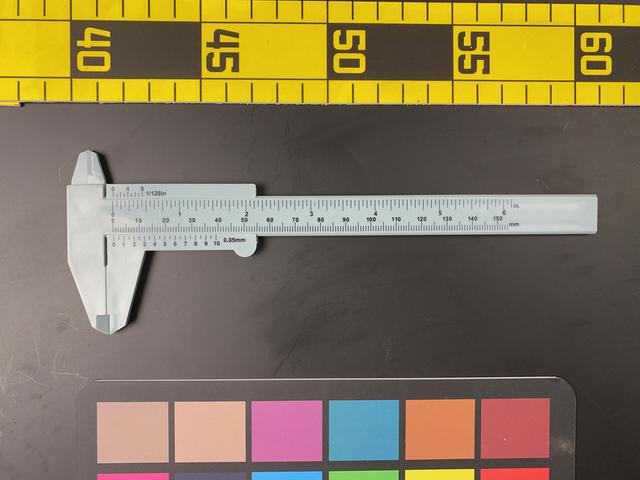 |
| Not all ultra-cheap calipers are complete junk. These plastic ones are perfectly usable and able to measure with quite respectable accuracy, considering that they cost two dollars. The beauty of a Vernier scale is that it costs virtually nothing to add. |
 |
| Verniers are often a bit more complicated because they read more than one extra digit. This very common type of shop Vernier caliper has two scales, one for inches and one for millimeters. The inch scale has numbered marks every 1/10”, and four sub-divisions between each, for a total of 40 divisions per inch (giving a spacing of 0.025” per division). The small Vernier scale has 25 divisions in the space of 24 on the main scale. First you look at the main scale to get within the nearest 0.025”, then you find the best-aligned Vernier mark and add up to 0.024” more to read to the nearest 0.001” (1/1000”). The metric scale has a division every 1mm on the main scale, and the Vernier scale has 50 divisions in the space of 49 on the main scale. First you read to the nearest 1mm on the main scale, then you find the best-aligned Vernier mark to get within 0.02mm (1/50mm). |
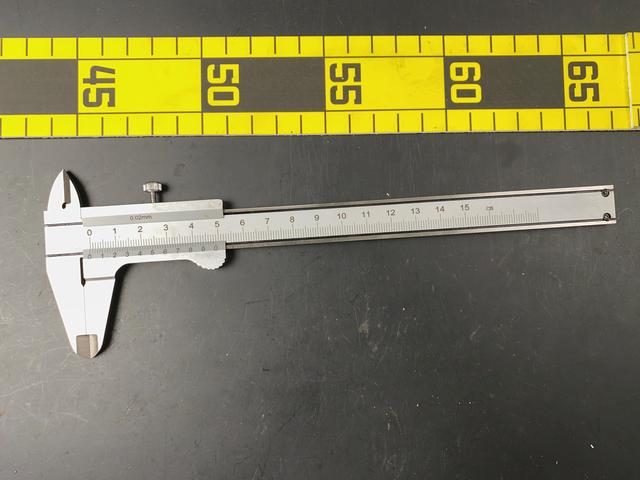 |
| These metal calipers were also too cheap, but at least their scales could be adjusted to the correct position. Now the only problem that they feel scratchy when you slide the jaws. |
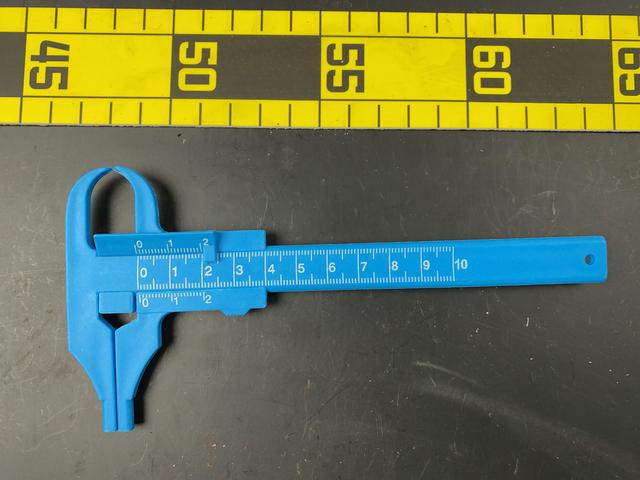 |
| These plastic calipers are proof that some people just don’t understand the point of Vernier scales. The small sliding scales have exactly the same spacing as the main scale. They serve no purpose. At least you can write with the pen caliper. |
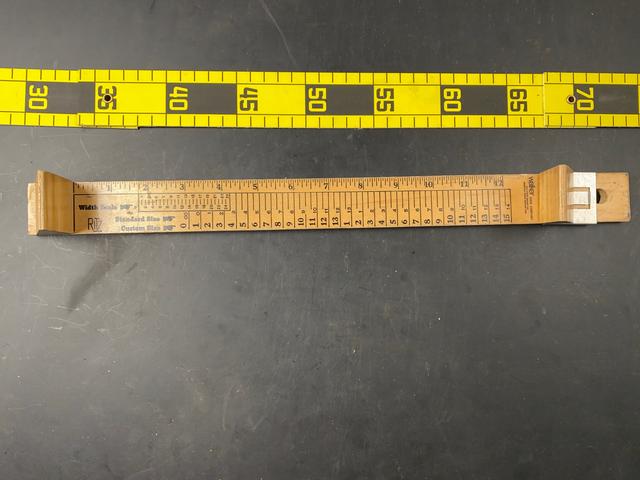 |
| This old wooden caliper measures the length of a foot, for shoe-sizing purposes. |
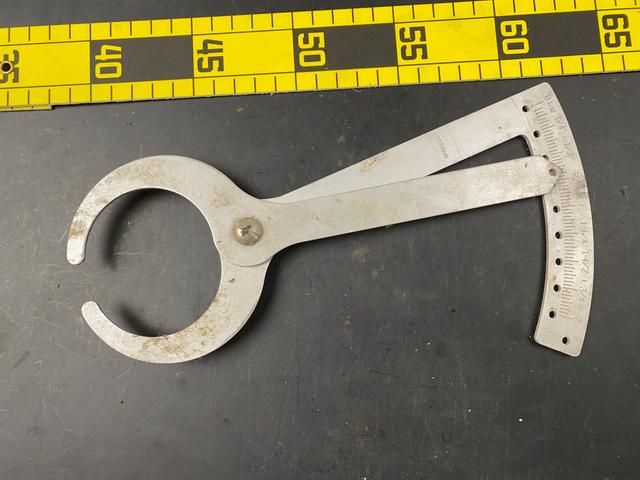 |
| These calipers are meant for woodworking, for example to measure the thickness of a bowl you’re turning on a lathe, or a board you’re thickness planing. |
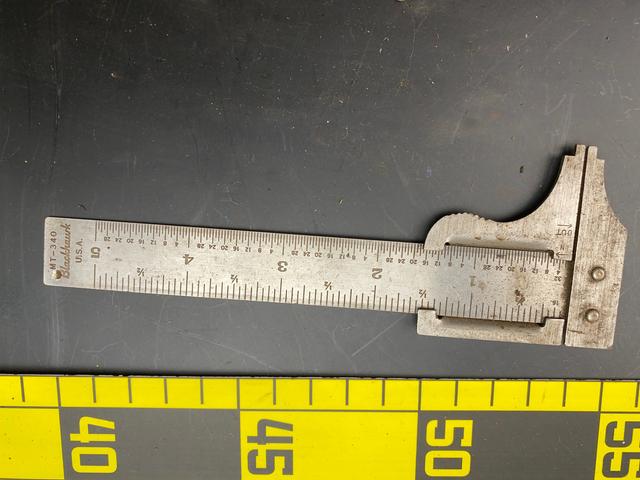 |
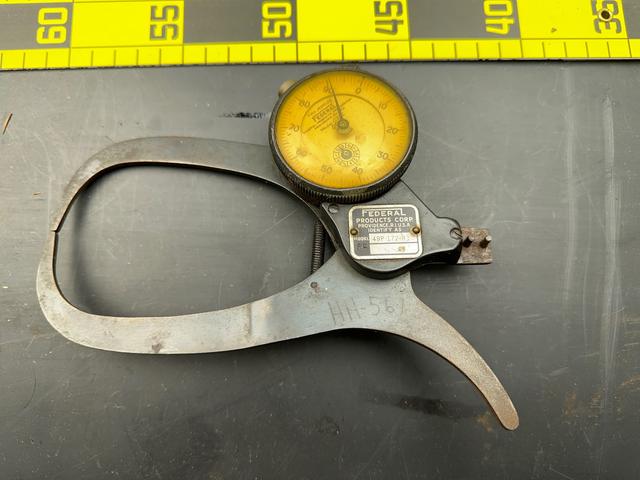 |
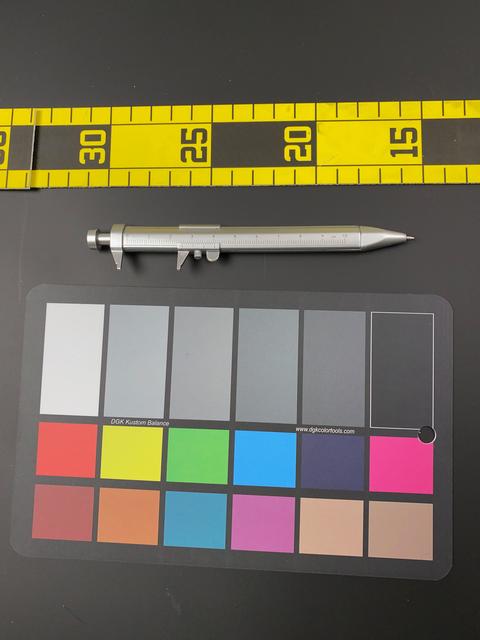 |
| Plastic Non-Vernier Caliper |
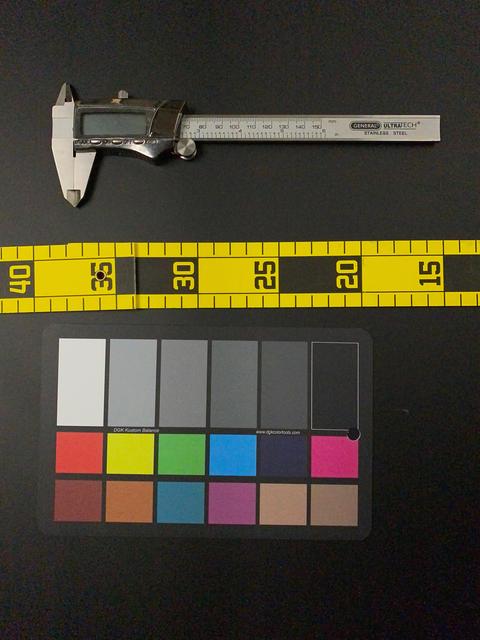 |
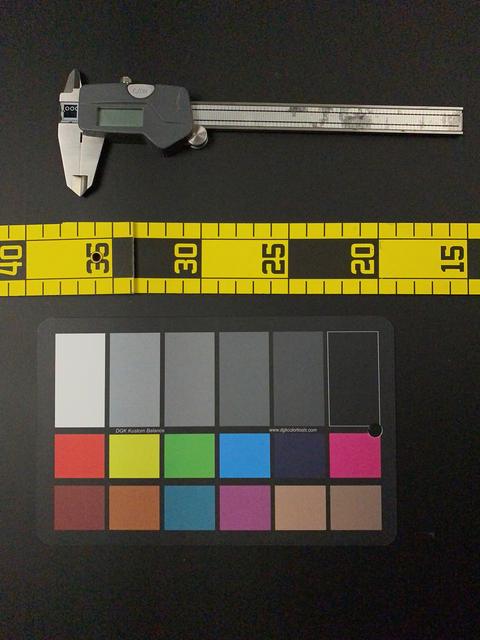 |
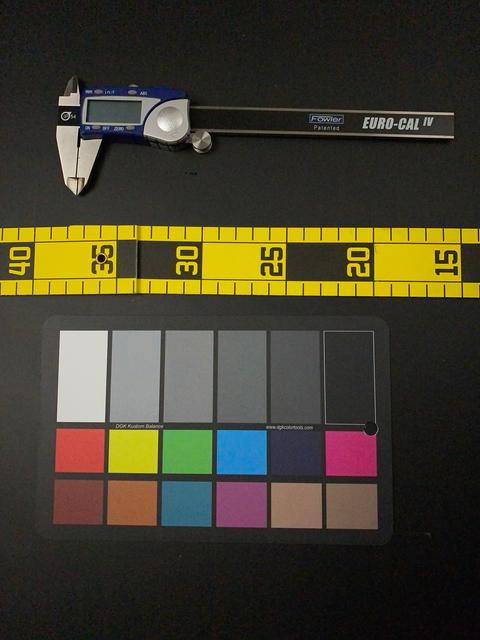 |
Do you have a better example of this kind of tool? Let me know by leaving a comment, and include a picture of it if you can so everyone can see!